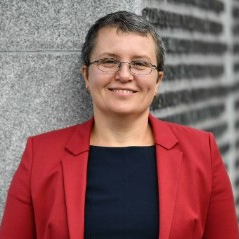Greenhouse Gases Monitoring, Inventory, and Modelling Studies in Poland
A special issue of Atmosphere (ISSN 2073-4433). This special issue belongs to the section "Air Quality".
Deadline for manuscript submissions: closed (31 May 2020) | Viewed by 34399
Special Issue Editors
Interests: atmosphere dynamics and composition; application of isotope tracers for greenhouse gas cycling studies; application of UAVs (unmanned aerial vehicles) in atmospheric studies; numerical modeling of the atmospheric circulation and greenhouse gas transport
Special Issues, Collections and Topics in MDPI journals
Interests: methods standardization; odor emission regulation; air quality monitoring; dynamic olfactometry; odor mapping; odor modeling
Special Issues, Collections and Topics in MDPI journals
Special Issue Information
Dear Colleagues,
In recent years, a significant acceleration of global warming has been observed. For better prediction of climate change, a precise and reilable observation of greenhouse gases’ (GHG) mixing ratios and fluxes representing different regions of Earth is required. This year is the 25th anniversary since the first GHG remote station at Kasprowy Wierch in Tatra Mountains, Poland was launched. Apart from atmospheric GHG monitoring activity, a number of different activieties focused on biogenic ecosystem gas exchange dynamics, anthropogenic emission inventories, role of urban areas in carbon cycling or atmospheric transport modeling have been peroformed in Poland.
To summarize the state of GHG research in Poland, the open-access journal Atmosphere is hosting a Special Issue entitled “Greenhouse Gases Monitoring, Inventory and Modelling studies in Poland”. The aim of this issue is to provide a consistent source of information concerning past and present activities regarding different aspects of atmospheric greenhouse gases studies, as well as allow a better exchange of knowledge about GHG research and strengthening cooperation between research groups working in different aspects of climate change observed in this region of Europe.
Original results, review papers, and model studies related to the following aspects are all welcome contributions:
- Long-term observations of greenhouse gases at remote sites in Poland and Central/Eastern Europe;
- Carbon cycle studies in urban areas;
- Application of stable and radioactive traces in greenhouse gas studies;
- Greenhouse gas emission estimations for Poland;
- Role of different ecosystems in greenhouse gas balance in Poland;
- Modelling of emission, mixing ratios, and transport of greenhouse gases.
Dr. Miroslaw Zimnoch
Prof. Izabela Sówka
Guest Editor
Manuscript Submission Information
Manuscripts should be submitted online at www.mdpi.com by registering and logging in to this website. Once you are registered, click here to go to the submission form. Manuscripts can be submitted until the deadline. All submissions that pass pre-check are peer-reviewed. Accepted papers will be published continuously in the journal (as soon as accepted) and will be listed together on the special issue website. Research articles, review articles as well as short communications are invited. For planned papers, a title and short abstract (about 100 words) can be sent to the Editorial Office for announcement on this website.
Submitted manuscripts should not have been published previously, nor be under consideration for publication elsewhere (except conference proceedings papers). All manuscripts are thoroughly refereed through a single-blind peer-review process. A guide for authors and other relevant information for submission of manuscripts is available on the Instructions for Authors page. Atmosphere is an international peer-reviewed open access monthly journal published by MDPI.
Please visit the Instructions for Authors page before submitting a manuscript. The Article Processing Charge (APC) for publication in this open access journal is 2400 CHF (Swiss Francs). Submitted papers should be well formatted and use good English. Authors may use MDPI's English editing service prior to publication or during author revisions.
Keywords
- greenhouse gases
- isotope tracers
- anthropogenic emissions
- biospheric exchange
- emission inventories
- atmospheric numenrical modeling
Benefits of Publishing in a Special Issue
- Ease of navigation: Grouping papers by topic helps scholars navigate broad scope journals more efficiently.
- Greater discoverability: Special Issues support the reach and impact of scientific research. Articles in Special Issues are more discoverable and cited more frequently.
- Expansion of research network: Special Issues facilitate connections among authors, fostering scientific collaborations.
- External promotion: Articles in Special Issues are often promoted through the journal's social media, increasing their visibility.
- e-Book format: Special Issues with more than 10 articles can be published as dedicated e-books, ensuring wide and rapid dissemination.
Further information on MDPI's Special Issue polices can be found here.






